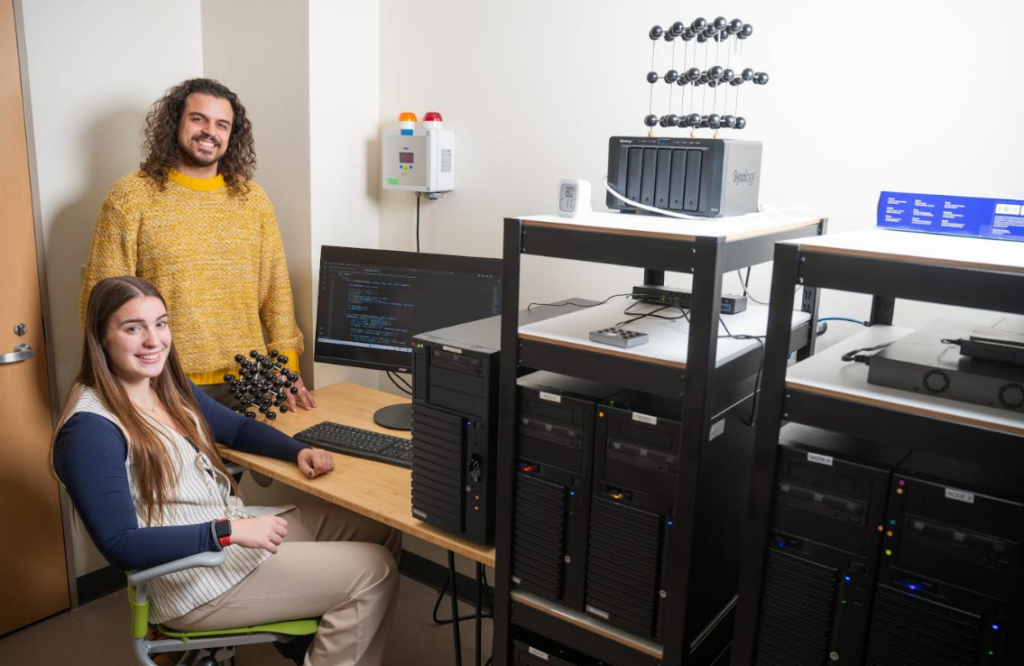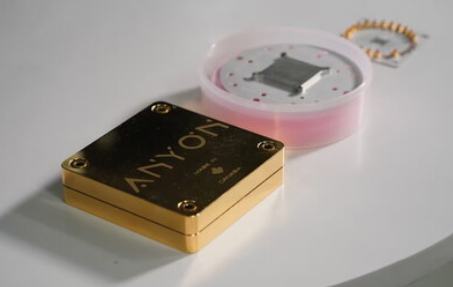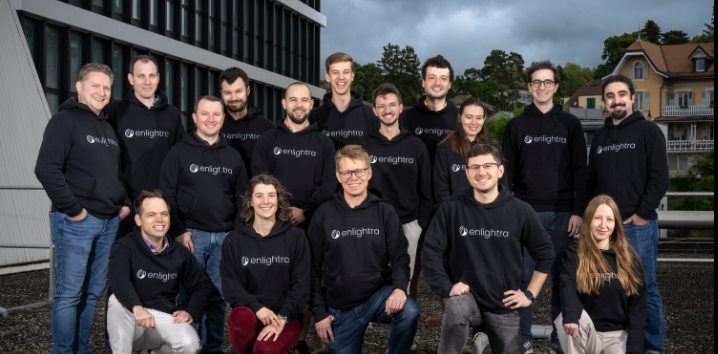Insider Brief
- Researchers from Atom Computing, joined by Microsoft Quantum and others, demonstrated that reusing and replacing helper qubits midcircuit can support long-running, fault-tolerant quantum operations on neutral atom processors.
- The team achieved up to 41 rounds of error detection using repetition codes while maintaining stable error rates and demonstrated encoded Bell state preparation with a 0.4% logical failure rate.
- The study also showed that lost atoms could be replenished from an external trap midcircuit without disrupting coherence, advancing neutral atom systems toward scalable quantum error correction.
We all have heard the motto to recycle, reuse and restore. There may be a quantum computing version now. In a study, quantum scientists report that the repeated reuse and replacement of ancilla qubits — often dubbed “helper qubits” — during computation may create a capability that’s critical for building fault-tolerant quantum computers using neutral atoms.
The results, posted by the Atom Computing-led team to arXiv, show that neutral-atom systems can execute long-running logical circuits even in the face of atom loss, while preserving the coherence of quantum information.
The findings mark an important step toward scalable quantum error correction on a platform that faces unique challenges related to atom stability and replacement. By integrating repeated midcircuit measurement (MCM), atom reinitialization, and real-time atom replenishment from an external reservoir, the system effectively extends the useful lifetime of quantum circuits beyond the lifespan of individual atoms, according to the Atom Computer research team, which was joined by scientists from Microsoft Quantum, the Colorado School of Mines and Stanford University.

Reusing Ancillae, Replacing Loss
Quantum processors based on neutral atoms are known for their scalability and flexible connectivity, enabled by trapping atoms in optical tweezers and moving them around. However, atom loss — whether from heating, measurement, or environmental noise — has been a significant hurdle for building long-duration logical circuits. In neutral atom systems — and in quantum computing, in general, ancilla qubits are used not to store information but to assist in monitoring and correcting errors. By interacting with data qubits and then being measured, they allow the system to detect problems without disturbing the fragile quantum states carrying the actual computation.
The researchers in this study addressed building long-duration logical circuits by demonstrating the repeated reuse of these ancilla qubits — specifically the ones used to extract error information from the system — after non-destructive measurement. More importantly, when ancilla atoms were lost, the team showed that they could be automatically replaced from a nearby storage zone using real-time feedback.
This reuse-and-replace cycle allows for repeated rounds of error detection without degrading the remaining quantum data. The team performed up to 41 rounds of error syndrome extraction in a repetition code while maintaining stable error rates across cycles.

Logical Computation with Repetition Codes
The experiment implemented a modified form of the repetition code, a classical error correction protocol that protects against bit-flip errors. The researchers configured the circuit so that the roles of data and ancilla qubits swapped each cycle, ensuring every atom could be measured, cooled and replaced when needed. This “walking repetition code” mitigates the accumulation of errors over time.
Two versions of the code were tested: a phase-insensitive version that ignored phase errors and a phase-sensitive version that introduced Hadamard gates to detect phase shifts. For clarification, a flip error means a qubit accidentally switches between 0 and 1 — think of this as a light turning on when it should stay off. A phase error is subtler: it changes the qubit’s internal rhythm or orientation, which can throw off interference patterns essential to quantum logic. In this study, error rates across multiple rounds of execution remained consistent, demonstrating that atom reuse and MCM did not introduce growing error over time.
Beyond error detection, the system was used to prepare high-fidelity entangled states — specifically, logically encoded Bell states — through a process called heralded state preparation. In this method, the system repeats attempts to generate the desired state until error-detecting ancilla qubits indicate success. By combining MCM and classical branching logic, the processor could iteratively refine its output while maintaining the coherence of the data block.
The study reports a basis-averaged logical failure rate of about 0.4% after the success condition was met. This rate — achieved in a repeat-until-success, fault-tolerant distillation loop — is in line with or better than early benchmarks for error-corrected systems. It represents a promising level of reliability for a platform still in the early stages of fault-tolerant design, suggesting the system can prepare high-fidelity logical states with fewer retries and less accumulated error than many competing approaches.
On average, 1.44 attempts were required before a valid state was accepted. When compared to unencoded Bell state generation, the encoded process yielded higher fidelity, underlining the value of the added fault tolerance.
Midcircuit Reloading from an Atomic Beam
One of the more interesting capabilities demonstrated in the work is the ability to replenish the reservoir of atoms midcircuit. This is something previously thought too disruptive for maintaining quantum coherence. The system accomplishes this by transporting atoms from a magneto-optical trap (MOT) located 30 centimeters away, using a moving optical lattice.
During the transfer, the team performed operations such as light-assisted collisions to ensure single-atom occupancy, measured atom presence using MCM imaging and moved filled tweezers into the storage zone. This entire process was conducted while atoms holding quantum information continued to run through a Ramsey sequence, a method for detecting decoherence.
Results showed that the replenishment process maintained over 95% coherence, nearly matching idle runs of the same duration. The study also noted that the MOT could be loaded continuously in parallel with other operations, with negligible decoherence effects.
Technical Architecture: Zoned and Modular
The researchers refer to a zoned architecture that underpins the method. You might think of this as a quantum assembly line. The quantum processor consists of separate physical regions: a register for quantum logic operations, interaction zones for two-qubit gates, measurement zones for readout and storage and loading zones for atom management. Atoms are shuttled between these zones using movable tweezers.
This modular structure allows the system to isolate sensitive quantum operations from potentially disruptive steps like measurement or loading. It also enables conditional movement of atoms based on real-time feedback, a key requirement for fault-tolerant operation.
The researchers used 171Yb atoms, which provide nuclear spin qubits with good coherence times. Single-qubit gates were performed using Raman transitions, and entangling gates were executed via controlled-Z operations using Rydberg excitation pathways.
Long-Term Neutral Atom Systems
According to the team, one of the implications — and maybe a central implication — is that neutral atom quantum processors, despite their susceptibility to atom loss, can achieve practical fault-tolerant features by actively managing qubit lifecycles. Midcircuit measurement, reset and atom replacement together allow quantum information to persist longer than the lifetime of any one atom.
The team did not attempt full quantum error correction codes like the surface code but focused on demonstrating that the underlying physical mechanisms — non-destructive readout, reset, conditional logic, and midcircuit reloading– are all operational. These capabilities are necessary building blocks for executing scalable, fault-tolerant quantum algorithms.
There’s more work to be done. Future directions include extending these methods to true quantum codes that correct both bit-flip and phase-flip errors, increasing the number of atoms and zones involved and optimizing the loss rates and fidelity of midcircuit operations.
Quantum industry watchers should focus on the Atom Computing-Microsoft partnership. The presence of Microsoft Quantum researchers among the co-authors suggests a growing collaboration between the two companies. According to The Quantum Insider Intelligence Platform, the two companies previously collaborated on demonstrating high-fidelity universal gates and logical qubits, laying the groundwork for integrating advanced fault-tolerance protocols with scalable atomic architectures.
The paper on arXiv dives in deeper technologically than this summary story can, so reviewing the study for more exact technological detail is recommended. ArXiv is a pre-print server, meaning the work has not officially been peer-review, a key step of the scientific method.


















